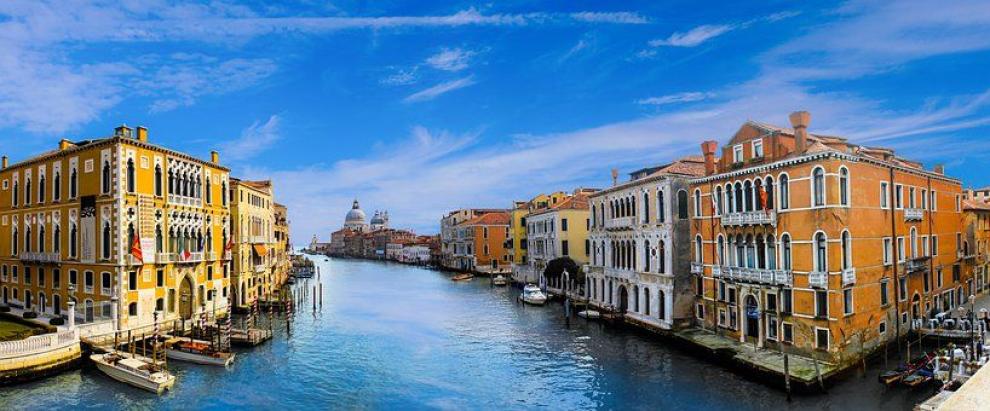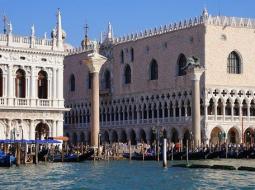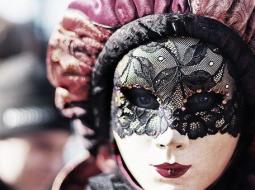Thessaloniki gets ready for its metro launch in November
The underground rapid transit lines have been under construction for almost two decades due to various project delays
 TheMayor.EU logo
TheMayor.EU logo 
At first Venice was controlled by the Byzantine Empire. However in 726 the Venetians partly gained their independence and elected Orso Ipato as doge (their word for duke).
In 810 the Franks tried but failed to conquer the Venetians. Meanwhile Venice flourished as a trading center and ships sailed to and from its ports. Its population grew steadily. In 828 the body of St Mark was smuggled from Egypt to Venice. St Mark then became the patron saint of the city.
In the Middle Ages Venice continued to flourish as a port and trading center. Meanwhile in 1199 a fourth crusade was proposed. The Venetians agreed to build a fleet of ships to ferry the Crusaders. However when the Crusader army assembled they were unable to pay for the ships. So the Venetians persuaded them to join an expedition to raid Constantinople.
Venetians and Crusaders captured the city in 1204 and they looted it. Venice was also involved in other wars at that time. The Italian city of Genoa was a powerful rival to Venice and during the 13th and 14th centuries the Genoese and Venetians fought 5 wars.
Furthermore in 1348 the Black Death devastated the population of Venice. Therefore in 1403 Venice introduced quarantine. Ships arriving from infected areas had to stop at an island called Lazaretto and the passengers had to wait for 40 days before they were permitted to enter the city.
In the 15th century Venice faced a new threat - the Turks. In 1453 they captured Constantinople and afterwards they advanced into Southeast Europe. In 1489 Venice came to rule Cyprus. However in 1571 the Turks conquered the island.
Furthermore in 1508 several European countries formed the League of Cambrai and went to war against Venice. However after 8 years of war the map was largely unchanged.
During the 17th century Venice gradually lost power and influence. In the 18th century Venice was politically unimportant although the arts such as opera flourished. Then in 1797 Napoleon dissolved the Republic of Venice. However after his fall in 1815 Venice was handed to Austria.
The railway reached Venice in 1846. However Venice did not prosper under Austrian rule. In 1848 revolutions swept Europe and Venice rose in rebellion against the Austrians. For a short period Daniele Manin became president of an independent Venice.
However Austrian forces bombarded the city and Venice was forced to surrender in August 1849. Yet in 1866 the Austrians were defeated by the Prussians and Venice was allowed to join the new nation of Italy.
In the late 19th century Venice flourished as a port and a manufacturing center. Then in 1933 Mussolini built a road from the mainland to Venice. During the Second World War Venice was undamaged by fighting but the Jewish population was deported. In 1966 Venice suffered a severe flood but the city soon recovered.
Source: localhistories.com
Venice is a city in northeastern Italy and the capital of the Veneto region. It is situated across a group of 118 small islands that are separated by canals and linked by over 400 bridges. The islands are located in the shallow Venetian Lagoon, an enclosed bay that lies between the mouths of the Po and the Piave rivers.
Parts of Venice are renowned for the beauty of their settings, their architecture and artwork. The lagoon and a part of the city are listed as a UNESCO World Heritage Site. The population of Venice is 261, 905 (2017).
Venice's economy is mainly based on tourism, shipbuilding (mainly done in the neighboring cities of Mestee and Porto Marghera), services, trade and industrial exports. Glass production in Murano and lace production in Burano are also highly important to the economy.
Venice is an important tourist destination for its celebrated art and architecture.The city gets up to 60,000 tourists per day (2017 estimate). Estimates as to the annual number of tourists vary from 22 million to 30 million.

There are numerous attractions in Venice, such as St. Mark`s Basilica, the Doge`s Palace, the Grand Canal, and the Piazza San Marco. The Lido di Venezia is also a popular international luxury destination, attracting thousands of actors, critics, celebrities, and mainly people in the cinematic industry. The city also relies heavily on the cruise business.

Tourism has been a major sector of Venetian industry since the 18th century, when it was a major center for the Grand Tour, with its beautiful cityscape, uniqueness, and rich musical and artistic cultural heritage. In the 1980s, the Carnival of Venice was revived and the city has become a major centre of international conferences and festivals, such as the prestigious Venice Biennale and the Venice Film Festival, which attract visitors from all over the world for their theatrical, cultural, cinematic, artistic, and musical productions.
Address: Via Palazzo 1, Venice